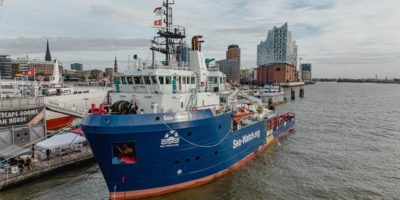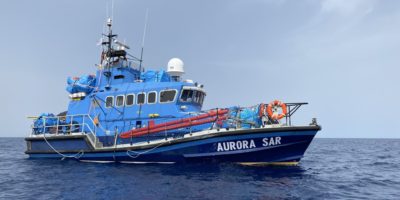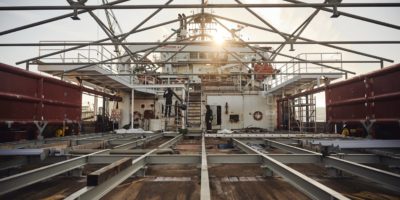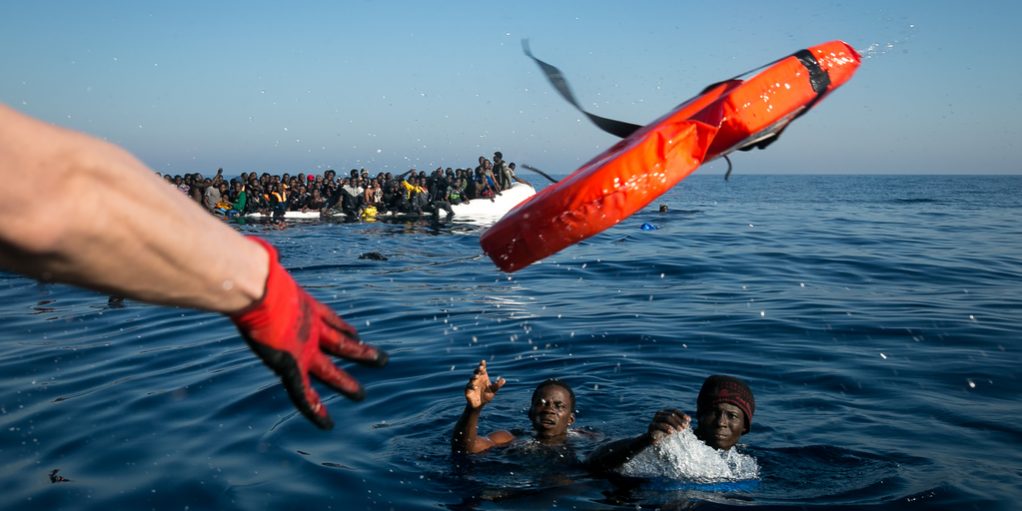The start of the Sea-Watch rescue mission has been dramatic: In fact, on the first day of operations in 2017, the crew of Sea-Watch 2 saved around 300 people on several cramped rubber boats, which were sinking. Ship and crew were operating at their absolute capacity. Adding to this, the Maritime Rescue Coordination Centre (MRCC) could not send a ship for assistance. The result was thousands of refugees in a state of distress at sea during the weekend. The minimal capacities of state support in rescues are a result of a political strategy: rescue missions undermine the policy to condone people dying for reasons of deterrence.
“The fact that the capacities for rescue are already at their breaking point in spring shows that the EU did not learn anything from the boat disasters of recent years. The next big catastrophe is only a question of time”, says head of mission Martin Taminiau. The Sea-Watch 2 is not designed for taking aboard hundreds of people. Nevertheless, on Sunday night, she had to bring the rescued towards the direction of Lampedusa until, at first light, they could finally be handed over to a ship of the Italian coastguard. Despite repeated requests by the crew of Sea-Watch 2 who were already responding to several emergencies at sea and clearly operating at full capacity, the MRCC could not send a ship for assistance because all other ships were already involved in rescue operations in the area.
Mare Mortum is intended for deterrence
2016 was the deadliest year at Europe’s borders, especially in the Mediterranean Sea. ‘Mare Nostrum’ is no more – only two years ago, tens of thousands of people were rescued by the Italian navy. All we see now is ‘Mare Mortum’. “It can only be a result of political calculations when 5000 people drown or go missing on their way to a safe harbour in 2016… and there are still not enough rescue forces installed for this year”, adds Taminiau. “Rescue operations undermine the policy to condone people dying which is why they are a thorn in the European Union’s side – this already was the case with the Italian mission Mare Nostrum.”
Private rescue missions, however, cannot be discontinued by the EU as easily as ‘Mare Nostrum’ was. “We will not allow for the EU to put fending off migration before the basic right to life and let thousands die in the Mediterranean. When it comes to saving human lives, we will make no compromise this year”, says Taminiau. “Even though Fabrice Leggeri, the Head of the European border control agency Frontex, calls to refrain from assistance, we still take the Fundamental Rights Charta of the European Union and the international maritime law seriously.”
The first operation of the Sea-Watch crew on Sunday shows how important it is to act. Some of the dinghies were in such a bad condition that they would have sunk rapidly. If the Sea-Watch crew had not come to their aid many of the refugees would have died. This year’s Sea-Watch mission at Europe’s deadliest border is using the motto: #HumanRightsNoCompromise
A member of the Sea-Watch crew throws a life jacket to two refugees. Foto: Fabian Melber 19.03.2017











